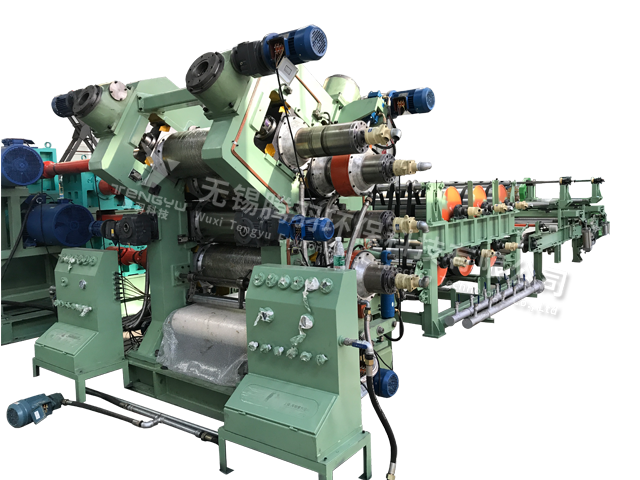
Main uses of the kneader
Release time:
2024-12-13
Used for the mastication and mixing of natural rubber and other polymeric elastomers. A closed mill is a machine that uses a pair of rotors with specific shapes that rotate relative to each other to intermittently masticate and mix polymeric materials under adjustable temperature and pressure in a closed state. In the processing of natural rubber and other polymeric elastomers, the closed mill, through strong stirring and shearing action, ensures that the rubber material and compounding agents are fully mixed, improving the plasticity of the rubber material. For example, the main purpose of masticating rubber in a closed mill is to break the macromolecular chains under mechanical, thermal, and chemical actions, increasing plasticity to meet various process requirements in manufacturing, such as compounding agent mixing, calendering, pattern shape, molding, rubber flow, and adhesion. Widely used in the processing of rubber, plastic, and other materials, such as mixing, mastication, and extrusion. A closed-type rubber mill, or closed mill, is mainly used for the mastication and mixing of rubber, and is also used for mixing plastics, asphalt materials, felt materials, enamel materials, and various synthetic resin materials. The main functions of a closed mill include mixing, mastication, and extrusion processing. During the mixing process, the closed mill uses its internal stirrer and heating system to bond different types of rubber or plastic materials together, ensuring uniform material mixing. During the mastication process, the closed mill uses high-speed stirring and high-temperature heating to melt the raw materials and form a uniform mixture. During extrusion processing, the closed mill extrudes the plasticized material through the extrusion port to form the desired product. The application and role of closed mills in the rubber industry are specifically reflected in plasticization, mixing, calendering, cooling, and granulation, providing strong support for the preparation of high-performance rubber products. At the same time, closed mills also play an important role in the processing of plastics and other materials, ensuring uniform material mixing and complete plasticization through stirring, heating, and mechanical transmission, ultimately achieving product extrusion processing.
- Used for the mastication and mixing of natural rubber and other polymeric elastomers.
Internal Mixer A machine equipped with a pair of rotors with specific shapes that rotate relative to each other. It intermittently masticates and mixes polymeric materials under adjustable temperature and pressure in a closed state. During the processing of natural rubber and other polymeric elastomers, the internal mixer, through intense stirring and shearing, ensures that the rubber compound and compounding agents are thoroughly mixed, improving the plasticity of the compound. For example, the main purpose of masticating rubber in an internal mixer is to break the macromolecular chains under mechanical, thermal, and chemical actions, increasing plasticity to meet various process requirements in manufacturing, such as compounding agent mixing, calendering, pattern shape, molding, compound flowability, and adhesion.
- Widely used in the processing of rubber, plastic, and other materials, such as mixing, mastication, and extrusion.
Abbreviation for closed-type rubber mixing machine Internal Mixer mainly used for the mastication and mixing of rubber, also used for mixing plastics, asphalt materials, felt materials, enamel materials, and various synthetic resin materials. The main functions of an internal mixer include mixing, mastication, and extrusion processing. During the mixing process, the internal mixer uses its internal stirrer and heating system to bond different types of rubber or plastic materials together, ensuring uniform material mixing. During the mastication process, the internal mixer uses high-speed stirring and high-temperature heating to melt the raw materials and form a uniform mixture. During the extrusion process, the internal mixer extrudes the plasticized material through the extrusion port to form the desired product. Internal Mixer Its applications and functions in the rubber industry are specifically reflected in multiple aspects such as plasticization, mixing, calendering, cooling, and granulation, providing strong support for the preparation of high-performance rubber products. At the same time, the internal mixer also plays an important role in the processing of plastics and other materials. Through stirring, heating, and mechanical transmission, it ensures uniform material mixing and complete plasticization, ultimately achieving product extrusion processing.







